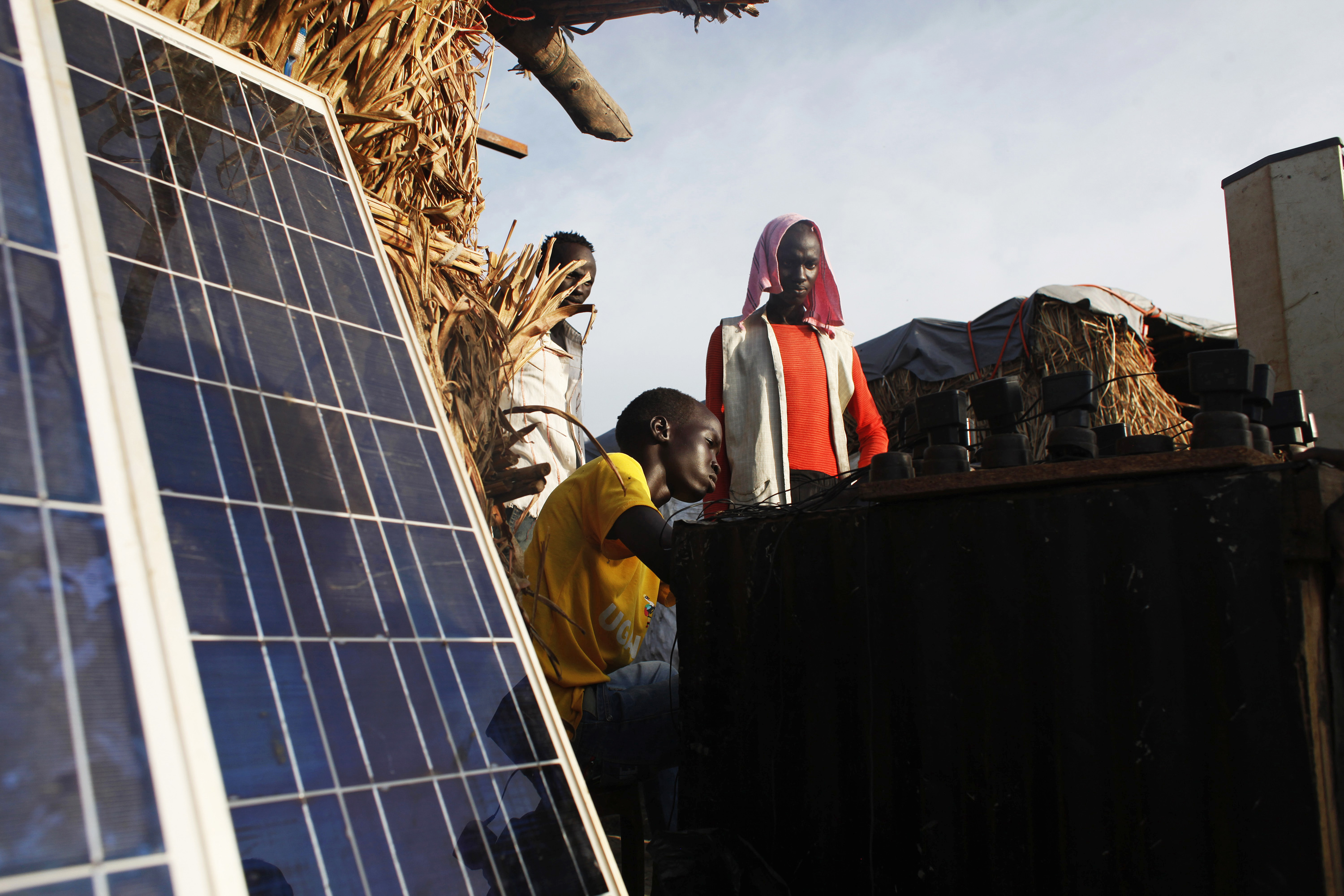How the U.S. is ceding a huge energy advantage to the developing world
The poorest parts of the world don't have much traditional energy infrastructure. That's a good thing.


Do climate change doom-and-gloomers need to start cheering up?
Jonathan Chait thinks so. "This is the year humans finally got serious about saving themselves from themselves" is the subtitle of his new long read in New York magazine. His case is far from substance-less. But read this caustic take on the inadequacy of President Obama's clean power plan, by Brad Johnson in Jacobin, or David Roberts' grim summation in Vox of the gargantuan socioeconomic revolution necessary to hold global warming below two degrees Celsius. You'll realize neither they nor Chait make any factual claims that contradict the other side. The differences are all in framing and which baselines you think we should be measuring from: the ideal (Johnson, and to a degree Roberts) or what we thought was possible a few years ago (Chait).
But there is one change Chait mentions that deserves to be teased out in greater detail, because it suggests we really do face a world altered for the better:
The Week
Escape your echo chamber. Get the facts behind the news, plus analysis from multiple perspectives.

Sign up for The Week's Free Newsletters
From our morning news briefing to a weekly Good News Newsletter, get the best of The Week delivered directly to your inbox.
From our morning news briefing to a weekly Good News Newsletter, get the best of The Week delivered directly to your inbox.
For most of the 1.3 billion people globally without access to electricity, building new solar power is already cheaper than fossil-fuel generation. And so, the possibility has come into view that, just as the developing world is skipping landlines and moving straight into cellular communication, it will forgo the dirty-energy path and follow a clean one. The global poor can create a future of economic growth for themselves without burning the world. [New York]
While the link between energy consumption and economic growth is weakening, at least in the developed world, it's long been the case that global poverty reduction cannot happen without massively increasing energy consumption per person. And the assumption has been that "massively increasing energy consumption" meant burning more fossil fuels.
But that rests on the further assumption that energy consumption in the developing world will follow the same industrial pattern as in the West: i.e. the creation of enormous electrical grids linked to centralized, fossil fuel-powered energy plants. But renewable energy undercuts this logic: Solar, in particular, can be deployed on individual rooftops, or set up in town squares for a grid that does not extend beyond the local community. Even wind farms can be set up so they power local grids, with no need for any wider-ranging infrastructure to bring in a regular supply of fossil fuels.
Thanks to a combination of impoverished economies and political sclerosis, well over a billion people across Africa and South Asia have no access to a traditional grid system. For them, energy systems that can be deployed on a local, even house-to-house scale — and that require no outside fuel source other than wind or sunshine — are a godsend.
All that remains is for renewable energy to become cost competitive with traditional fossil fuels. "In the sunniest locations in the world, building a new solar-power plant now costs less than coal or natural gas, even without subsidies," Chait reports. "Within six years, this will be true of places with average sunlight, too." Meanwhile, in America, wind power is "competitive in a growing swath of the country (the windy parts). By 2023, new wind power is expected to cost less than new power plants burning natural gas."
A free daily email with the biggest news stories of the day – and the best features from TheWeek.com
There is, of course, no single price for renewable energy or fossil fuels. There is a distributed cloud of prices the world over, determined by the local vagaries of supply, demand, trade, geography, and more. But the respective centers of gravity for each of those clouds are rapidly pulling even with one another. Soon, the cloud of renewable prices will fall below the fossil fuel sources, and from there the distance will just keep growing.
Indeed, we are rapidly approaching the point in America where using renewable energy instead of fossil fuels will effectively be an economic freebie. Even without subsidies or consideration of climate change's economic consequences, renewables will be cheaper. The only remaining economic cost will be the one-time expense of retooling our infrastructure: unplugging and decommissioning the fossil fuel plants, building sufficient renewable capacity, plugging it into the grid, and revamping that grid to handle green energy's particular vagaries. (And, of course, convincing the fossil fuel industries to forgo the massive reserves of untapped dirty energy they still expect to monetize.)
This gets to the great advantage the global poor and the developing world actually have over the West: To a large degree, they don't have to make this switch. There is no previous fossil fuel infrastructure that requires adaptation. They can simply build from scratch.
Not surprisingly, the pace at which solar power is being built in these parts of the globe dawrfs that of America and Europe. Globally, the growth of solar capacity has rocketed upward faster than even the most enthusiastic environmental activists predicted. We will likely see the future of energy use — green, more localized, more nimble and adaptable — in Africa and South Asia well before it comes to America.
This does not get us out of the woods by any stretch. The task of decarbonizing the global economy fast enough to manage climate change's risks remains staggeringly huge. Getting the U.S. to a fully green energy system by 2050 is doable, but will require a level of industrial and policy ambition that our politics seems ill-prepared to handle, to put it very mildly.
But quietly, while no one was looking, the world crossed a threshold. Even without pricing carbon emissions (i.e. making it costlier to produce pollution through taxes or fines or what have you), market forces in the developing world have aligned to make renewable energy the most economical option. If the West can properly price those emissions in its own economies — reorienting our markets to the task of innovating and producing green energy — the developing world stands ready to soak up our potential exports on a massive scale.
The assumption has long been that however hard it would be to get the developed world to decarbonize, getting the developing world to do it would be much harder. That's been a source of despair for climate activists the world over.
But as it turns out, that assumption almost certainly gets matters backwards.
Jeff Spross was the economics and business correspondent at TheWeek.com. He was previously a reporter at ThinkProgress.
-
 Jaguar Land Rover’s cyber bailout
Jaguar Land Rover’s cyber bailoutTalking Point Should the government do more to protect business from the ‘cyber shockwave’?
-
 Russia: already at war with Europe?
Russia: already at war with Europe?Talking Point As Kremlin begins ‘cranking up attacks’ on Ukraine’s European allies, questions about future action remain unanswered
-
 Crossword: October 5, 2025
Crossword: October 5, 2025The Week's daily crossword puzzle
